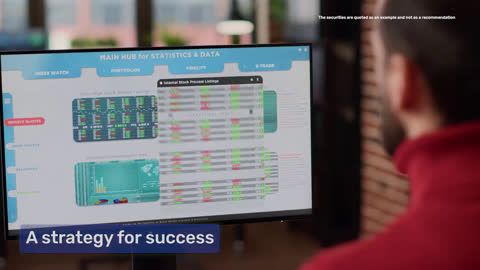The Income Tax Act of India provides a comprehensive framework for taxation, including provisions for tax deduction at source (TDS). Among these, Section 194D and Section 194DA play a significant role in regulating TDS on insurance commissions and life insurance payouts, respectively. These sections ensure proper tax compliance while offering clarity on exemptions, thresholds, and rates. This article delves into the specifics of these sections, recent updates from the Union Budget 2024-25, and how taxpayers can comply with these provisions.
Section 194D & Section 194DA under Income Tax Act
Section 194D mandates TDS on insurance commission payments, while Section 194DA applies TDS on life insurance payouts not exempt under Section 10(10D).
Introduction
Key Updates from Budget 2024-25 Regarding Section 194D & 194DA
The Union Budget 2024-25 introduced noteworthy changes to Section 194D and Section 194DA, aiming to simplify the taxation process for insurance agents and policyholders. Here are the major updates:
- Section 194DA Threshold Increase: The threshold limit for TDS deduction on life insurance payouts has been raised to Rs. 1 lakh for policies that do not qualify for exemptions under Section 10(10D). This provides relief to small policyholders who receive maturity proceeds below this amount.
- Clarity on TDS Applicability: The Budget emphasised that TDS under Section 194DA applies only to policies where the premium exceeds 10% of the sum assured, further aligning it with Section 10(10D) exemptions.
- Streamlined Compliance for Insurance Agents: Section 194D saw no major changes, but the government reiterated the importance of timely TDS deductions and filings by insurance companies.
These updates reflect the government’s intent to ease tax compliance while ensuring transparency. Source: ClearTax or Tax2Win.
Section 194D: TDS on Insurance Commission
What does Section 194D cover?
Section 194D of the Income Tax Act mandates the deduction of TDS on commissions paid to insurance agents. This ensures that income earned by agents from insurance companies is taxed at the source.
Who is liable to deduct TDS under Section 194D?
Insurance companies or entities paying commission to agents are responsible for deducting TDS under Section 194D.
TDS rates and threshold limit under Section 194D
- TDS Rate: 5% of the commission amount.
- Threshold Limit: No TDS is deducted if the total commission paid during a financial year does not exceed Rs. 15,000.
Time of deduction and payment procedure under Section 194D
TDS must be deducted at the time of crediting the commission to the agent’s account or during payment, whichever is earlier. The deducted amount should be deposited with the government within the prescribed timeline.
Exemptions and exceptions under Section 194D
- Reinsurance commissions are not covered under Section 194D.
- Agents with a total income below the taxable limit can submit Form 15G or Form 15H to avoid TDS deductions.
Section 194DA: TDS on Life Insurance Policy Payment
What payments are covered under Section 194DA?
Section 194DA applies to payouts from life insurance policies that do not qualify for exemptions under Section 10(10D). This includes maturity proceeds, surrender value, or bonus payments.
Who should deduct TDS as per Section 194DA?
The insurer is responsible for deducting TDS before making any payment to the policyholder.
TDS rates and threshold limits for Section 194DA
- TDS Rate: 5% on the net income portion (i.e., payout minus premium paid by the policyholder).
- Threshold Limit: No TDS is deducted if the total payout is below Rs. 1 lakh for non-exempt policies.
Exemptions under Section 194DA
- Policies exempt under Section 10(10D) are not subject to TDS.
- Submission of Form 15G or Form 15H can help avoid TDS deductions for eligible taxpayers.
Issuance of TDS certificates (Form 16A) under Section 194DA
Insurers must issue Form 16A to policyholders as proof of TDS deduction. This certificate can be used while filing income tax returns to claim refunds or adjust tax liabilities.
Section 10(10D) Exemptions Explained
Section 10(10D) of the Income Tax Act provides exemptions for life insurance maturity payouts, subject to certain conditions:
- Exempt Policies: Policies where the annual premium does not exceed 10% of the sum assured.
- Non-Exempt Policies: Policies issued after April 1, 2012, where the premium exceeds 10% of the sum assured are taxable under Section 194DA.
- Death Benefits: Any amount received as a death benefit is fully exempt under Section 10(10D), irrespective of the premium-to-sum-assured ratio.
These exemptions aim to encourage long-term savings through life insurance while ensuring tax compliance for high-premium policies.
Major Differences Between Section 194D and Section 194DA
| Aspect | Section 194D | Section 194DA |
|---|---|---|
| Applicability | Insurance commission | Life insurance payouts |
| Who deducts TDS | Insurance company | Insurance company |
| TDS Rate | 5% | 5% on net income portion |
| Threshold Limit | Rs. 15,000 | Rs. 1 lakh |
| Exemptions | Form 15G/15H, reinsurance commissions | Section 10(10D), Form 15G/15H |
This table highlights the distinct purposes and conditions of these sections, helping taxpayers understand their obligations.
How to Comply with Sections 194D & 194DA: Step-by-Step Guide
- Understand Applicability: Determine whether your income or payout falls under Section 194D or Section 194DA.
- Maintain Records: Keep track of premiums paid, commissions earned, and payouts received.
- Submit Forms: If eligible, submit Form 15G or Form 15H to avoid TDS deductions.
- Verify TDS Certificates: Ensure that you receive Form 16A from the deductor for accurate tax filing.
- File Income Tax Returns: Report all income and claim refunds for excess TDS deductions.
Adhering to these steps ensures compliance with tax laws and avoids penalties.
Conclusion
Understanding Section 194D and Section 194DA is essential for insurance agents and policyholders to comply with India’s tax regulations. These provisions simplify tax deduction processes while offering exemptions for eligible individuals. Whether you are an insurance agent earning commissions or a policyholder receiving maturity payouts, staying informed about these sections helps you fulfil your tax obligations effectively.
“Investments in securities markets are subject to market risks. Please read all scheme-related documents carefully before investing.”
Frequently asked questions
Yes, taxpayers can submit Form 15G or Form 15H (for senior citizens) to avoid TDS if their total income is below the taxable limit.
No, Section 194D does not apply to reinsurance commissions as it specifically targets insurance agents.
Taxpayers can claim a TDS refund by filing their income tax returns (ITR) and providing details of deductions and final income.
TDS is applicable on ULIP maturity proceeds only if the policy does not qualify for exemptions under Section 10(10D).
Related articles
Related videos
Bajaj Finserv App for all your financial needs and goals
Trusted by 50 million+ customers in India, Bajaj Finserv App is a one-stop solution for all your financial needs and goals.
You can use the Bajaj Finserv App to:
Apply for loans online, such as Instant Personal Loan, Home Loan, Business Loan, Gold Loan, and more.
- Explore and apply for co-branded credit cards online.
- Invest in fixed deposits and mutual funds on the app.
- Choose from multiple insurance for your health, motor and even pocket insurance, from various insurance providers.
- Pay and manage your bills and recharges using the BBPS platform. Use Bajaj Pay and Bajaj Wallet for quick and simple money transfers and transactions.
- Apply for Insta EMI Card and get a pre-approved limit on the app. Explore over 1 million products on the app that can be purchased from a partner store on Easy EMIs.
- Shop from over 100+ brand partners that offer a diverse range of products and services.
- Use specialised tools like EMI calculators, SIP Calculators
- Check your credit score, download loan statements, and even get quick customer support—all on the app.
Download the Bajaj Finserv App today and experience the convenience of managing your finances on one app.
Download App
Now request money from your friends and family and make instant payments.

- 1. Apply for Loans: Choose from personal, business, gold loans and more
- 2. Transact: Pay utility bills, use UPI, get FASTag and more
- 3. Shop: Buy over 1 million products on No Cost EMI
- 4. Invest: Buy stocks, mutual funds and invest in FD
















